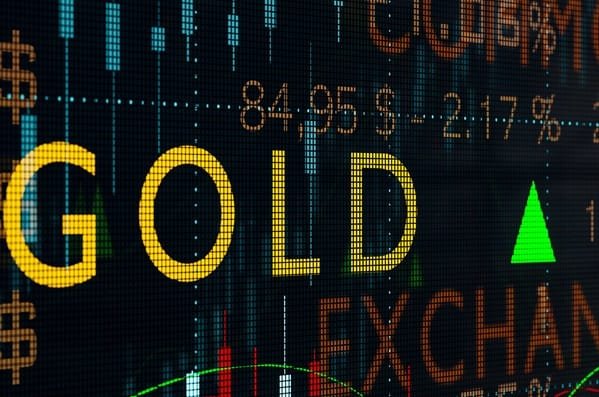The market can breathe a sigh of relief that we have the two marquee event risks behind us, and we move on – further tailwinds to risky assets are certainly there, with traders selling volatility, reducing hedges, and chasing high momentum and high beta plays, and notably in the higher quality tech names.
- Markets breathe a sigh of relief on a pleasing US CPI print
- The Fed statement, SEPs and Powell presser contains euphoria
- Tech leads: Market moves on the day
- Risk events for the session ahead
Asia should fire up on open, although our opening calls (ASX200 +0.7%, HK50 +0.7% and NKY225 +0.8%) only partially undo some of the recent pre-CPI positioning reduction, so we’ll see if the buyers step in on the open and push prices further higher – it will tell us a lot about semantics if they do.
The lack of love in the US session in materials and banks suggests getting real upside traction may be tough, as the buying in US trade has really centred in tech and industrial names, and that will be less impactful at an index level for the Asian bourses.
Much has been made of the US CPI print – it was a very pleasing number. Core services were essentially cut in half, at a run rate of 0.22%.
However, it was the ‘super core’ print (core services ex-housing) that jumped out, coming in at -0.04 and the first decline in two years. Rents did stay firm at 0.39% m/m, but we expect these to fall over time and this should pull core services gradually towards target.
Of course, one swallow doesn’t make a summer, but we can see that sequentially the 3-month annualised rate (of CPI) has come down from 4.1% to 3.3%, while the 6-month annualised rate sits at 3.8% (from 4.1%).
One can only imagine how much emphasis the market is going to place on the June CPI data (due 11 July) – and while there is a lot of water to flow under the bridge before that print, and as we move into July, providing financial conditions don’t tighten too intently, then talking US nonfarm payrolls (5 July) and US CPI print will be all the rage at BBQ conversation.
Importantly, we take elements from this CPI basket and project into the all-important core PCE print (due 28 June) and estimate this running c.0.12% m/m or 2.6% y/y – clearly a positive run rate, and we look ahead today for US PPI print and the final contributions to the core PCE inflation calculation – so we’ll know if that 2.6% estimate is on the money.
As Jay Powell opined in his presser getting to 2.6% would be a good place and given the central case of the Fed is for core PCE to rise to 2.8% by Q424, a 2.6% print would certainly add fuel to cuts this year.
As many of our clients would have seen in the price action across markets, the market took off post-CPI, with the US swaps market pricing 50bp of cuts by December. S&P500 futures rallied 1.2%, gold spiked to $2341, and the USD took a broad hit.
The Fed statement and Chair Powell’s press conference did a good job of containing market euphoria though, with the collective within the Fed’s ranks moving the medium ‘dot’ to one cut priced for 2024, but subsequently adding an extra cut to 2025. Core PCE was taken to 2.8% for 2024 as expected, but it was down to Powell to level things out. He gave a measured view and while clearly pleased with the CPI print, remains somewhat unconvinced and not in a rush to cut rates.
That view may change, as the lack of revision to the Fed’s unemployment forecast (at 4%) offers a low bar to a potential cut, given we’re already at this level. So should we see a further deterioration in the BLS Household survey (as part of the payrolls report) on 5 July and the market will see a 25bp cut in the September meeting as a near lock. Plus, we see core PCE revised to 2.8%, which given current PCE tracking forecasts of 2.6% for the June print could indeed prove conservative.
The wash-up is a September Fed cut is given an implied probability of 62% (with 15bp of cuts priced), while we now see 41bp of cuts priced by December. With four FOMC meetings to go until year-end, this pricing certainly feels fair, and the rates market is torn between 1 or 2 cuts.
US equity markets have closed firmer, with the S&P500 +0.9%, and NAS100 +1.3%, while the Russell 2k outperformed +1.6%. It was big tech though that led the charge, with Apple (+2.9%), Nvidia (3.6%) and Microsoft +1.9%) putting in the points, and when these stocks alone make up 20% of the S&P500 market cap, it’s not hard to see why the index fared well despite broadly average breadth, where 59% of S&P500 co’s gained on the day.
US Treasuries are settling firmer, with yields lower across the curve, with 2’s now at 4.75% (-8bp), reflecting the moves in interest rate expectations. The USD has had a volatile session, notably in USDJPY, which traded from 157.28 to 155.72 (on CPI) and now resides at 156.70. High beta FX has worked, with AUDUSD once again testing .6700 and finding good supply kicking in, while we’ve seen good buying in the ZAR and NOK. Gold has been a whippy ride, with the initial move into $2341 faded hard and now sits at $2323.
Looking ahead to the risk in the upcoming session, we see Aussie jobs (11:30 AEST), which could throw some rapid-fire movement in the AUD, although with interest rate futures pricing no move from the RBA this year, I expect any initial move to be faded fairly quickly. In the US we get jobless claims, and PPI, which as suggested will influence the modelling of core PCE inflation.

